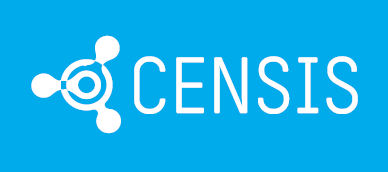We are pleased to announce the following Keynote Speakers at IEEE SENSORS 2017:
Monday, October 30th

Title: Gravitational wave detection: ultra-low noise sensor design from quantum optics to sensing black holes
Prof. Sheila Rowan, University of Glasgow
Abstract: The desire to create detectors capable of sensing the minute gravitational signals from violent astrophysical signals produced far out in our Universe has driven sensing technology across a wide range of fields in precision measurement. This lecture will discuss the basis of the measurement challenge - detecting vibrations of suspended mirrors corresponding to displacements of a few 10-18 m or less in the audio band - and cover some of the technological developments in the areas of lasers, optical materials, seismic isolation, gravimetry and space mission technology that this field continues to address.
Bio: Professor Sheila Rowan is the Chief Scientific Adviser for Scotland. She is the Director of the Institute for Gravitational Research at the University of Glasgow. She received an MBE in 2011. Sheila’s research is targeted at developing optical materials for use in gravitational wave detectors. Her recent work has been a crucial part of the Advanced LIGO upgrades, carried out between 2010 and 2015, that contributed to one of the most significant scientific breakthroughs of this century: the first detection of gravitational waves announced in February 2016. This resulted in a share of the 2016 Special Breakthrough Prize in Fundamental Physics for her and the members of her team in Glasgow.
Tuesday, October 31st

Title: Chip-scale atomic sensors: from clocks to brain imaging and beyond
Dr. John Kitching, NIST
Abstract: We describe recent work at NIST to develop precision instruments and sensors based on atomic spectroscopy, advanced semiconductor lasers and micro-electro- mechanical systems (MEMS). The design, fabrication and performance of these instruments will be described, as well as a number of applications to which the devices are well-suited. Finally, we speculate on possible future directions for chip-scale atomic instrumentation with a focus on the use of laser-cooled atomic samples and tools for fundamental metrology.
Bio: Dr. John Kitching is a Fellow and Group Leader in the Time and frequency Division at the National Institute of Standards and Technology. Over the last fifteen years, he and his group pioneered the development of microfabricated “chip-scale” atomic devices for use as frequency references, magnetometers and other sensors. He is a Fellow of the American Physical Society and has been awarded the Department of Commerce Silver and Gold Medals, the 2015 IEEE Sensors Council Technical Achievement Award, the 2016 IEEE-UFFC Rabi Award and the prestigious 2014 Rank Prize.
Wednesday, November 1st

Title: Interfacing with the Brain using Organic Electronics
Prof. George Malliaras, University of Cambridge
Abstract: The interfacing of electronics with the brain will help us understand how the brain works and will give us new tools for the diagnosis and treatment of neurological diseases. The field of organic electronics has made available a host of novel sensors that offer a unique combination of attractive properties, including mechanical flexibility, mixed ionic/electronic conduction, and enhanced biocompatibility. I will present examples of sensors that record brain electrophysiology and metabolism and show how they can be used to understand brain physiology and pathology, and to control actuators that deliver new therapies.
Bio: Professor George Malliaras received a PhD from the University of Groningen (1995) and did a postdoc at the IBM Almaden Research Center. Before joining the Ecole des Mines, he taught Materials Science at Cornell University (1999-2009), where he also served as the Director of the Cornell NanoScale Facility. His research has been recognized with awards from the New York Academy of Sciences, the US National Science Foundation, and DuPont. He is a member of the Hellenic National Council for Research and Technology, a Fellow of the Materials Research Society and of the Royal Society of Chemistry.









